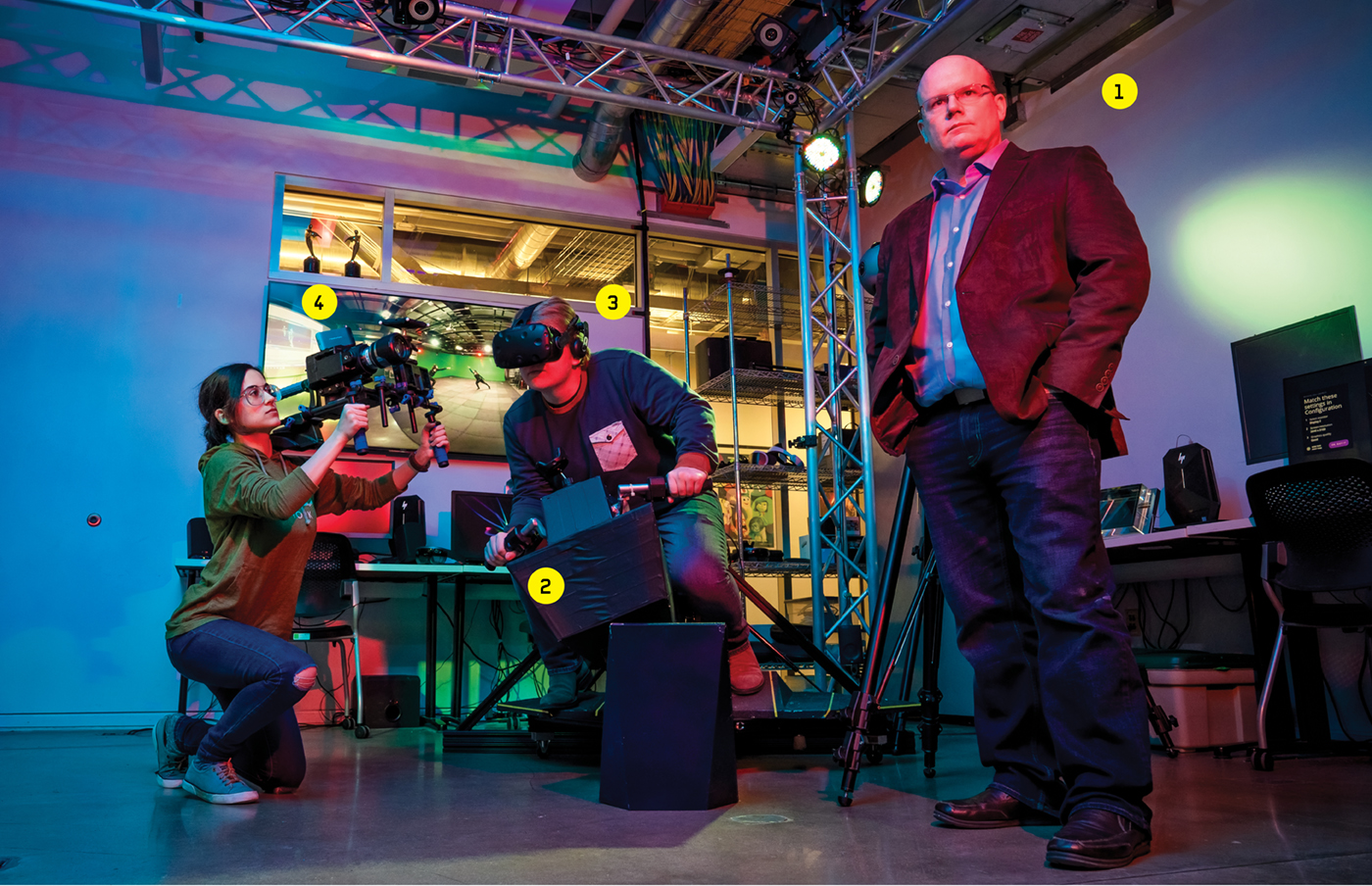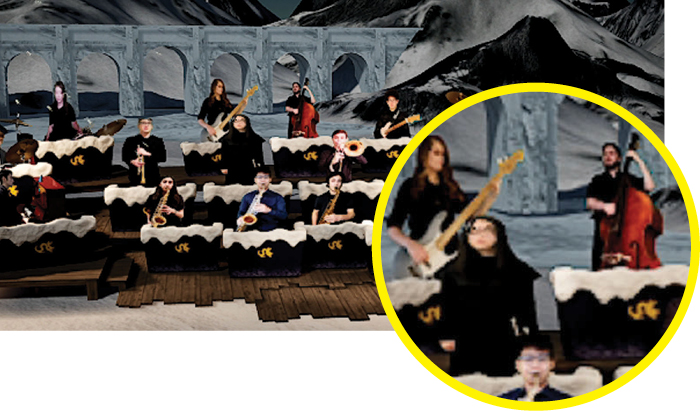The immersive Research Lab opened in Drexel’s Westphal College of Media Arts & Design in 2019 to train media arts students in the latest augmented and virtual reality technologies. Soon enough, though, the IRL lab was using those tools to help students and faculty across the University conduct basic coursework.
The unique, forward-looking workshop is equipped with specialized tools found at few universities. The equipment is used to create the realistic models and settings for movie visual effects, video games, computer visualization and now, virtual reality, augmented reality and other immersive media formats.

_INSIDE_THE_LAB
1. The 550-square-foot IRL lab is home to custom-built technologies developed for the lab by Assistant Professor and Program Director Nick Jushchyshyn (standing) and his collaborators.
2. Game design student Travis Hove ’20 (pictured) worked within a multidisciplinary team of faculty and students to build a motorcycle-like platform with motion capture technology for immersive reality and gaming content.
3. The lab is home to a custom-built 360-degree virtual reality camera and a number of special headsets, such as the one Hove is wearing, that overlay three dimensional worlds into the visual field.
4. The OptiTrak virtual camera system in the hands of Jennifer Raimondi ’20 (pictured) is used to pre-visualize in 3D how a computer-designed setting will look.
The IRL lab brought together 20 students in music and performing arts for a virtual winter jazz ensemble in November 2020, as COVID-19 cases were surging.
Some of the lab’s technologies are the most current in the industry, like cutting-edge virtual and augmented reality devices from Oculus, Microsoft HoloLens and Faceware, as well as more than 100 individual software programs. To display student work, the lab includes three screening rooms, stereo and mono display screens, an Ambisonic sound system and a 16-foot diameter domed projection screen.
As the University rotated to fully remote education in spring 2020, Program Director Nick Jushchyshyn showed everybody what the lab’s top-notch alt-reality tools were capable of.
He built 3D virtual versions of lab bench equipment for College of Engineering faculty and helped a dance instructor create motion-capture demos of her dance choreography for her remote students. Using standard technology like photogrammetry and the free immersive-spaces software Unreal Engine, he built an award show stage for Westphal’s annual Animation Festival. Drexel students were also able to participate virtually in the SIGGRAPH computer graphics conference using motion capture and virtual reality. IRL magic also brought together 20 members of Drexel’s Music program and the Department of Performing Arts for an online winter jazz ensemble.
“While we are preparing students to make their mark in a field that is in a constant state of motion, one thing is for certain — this technology, which allows us to experience our world, and others, in new and exciting ways, is the new reality,” says Jushchyshyn.


